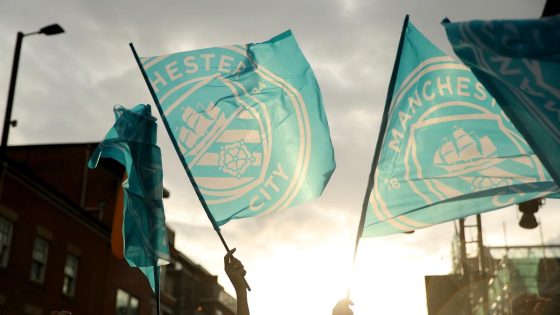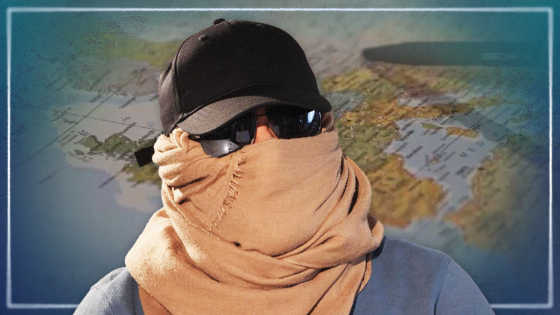Attendees inside Ocean Springs’ City Hall stepped back three centuries in time. In an era of swords, settlers, gunpowder and pirates, two men made resounding impacts still felt on the Mississippi Coast today.
The Ocean Springs Board of Aldermen motioned last month to find funding for historical markers for two figures that evoke the foundations of Coast history: buccaneer Laurens de Graaf and Native American frontier hero Jean Baptiste Baudreau II.
The aldermen made their decision after a presentation by Rodney Mooney, a historian who has found a passion for exploring Mississippi history. He said the stories behind these two individuals reveal glimpses of the vibrant past that makes Coast history unlike any other.
“These two men were both incredible and when they had a pursuit that they thought was worth fighting for, no matter if it was against an entire nation, they stood their ground,” Mooney said. “The people on the Gulf Coast were adventurous, incredibly brave, brilliant. They were settlers, but they didn’t settle. They did miraculous things. They had passions that they pursued, and they didn’t back down.”

Laurens de Graaf
In the late 1600s, European powers, particularly Spain, France and England, sought to lay claim to the vast resources of the New World. Growing colonies in the Caribbean and Latin America brought ships laden with valuable goods and treasure to the region. Rival nations, and men who sailed without a flag, were desperate for these commodities and struck out in acts of piracy.
Laurens de Graaf, said to be physically imposing and complete with a blonde, bushy mustache, was a notorious participant in the violence. Sir Henry Morgan, governor of Jamaica, pirate and now the namesake of a popular rum brand, called de Graaf “a great and mischievous pirate.”
During his career in swashbuckling, de Graaf captured enough Spanish ships and gold to form a pirate fleet. When the Spanish sent an armada to hunt him down, de Graaf sailed to confront them. After hours of thundering cannon smoke, the Spanish had surrendered – de Graaf claimed a new flagship and 120,000 pesos in silver.
He later joined a combined pirate fleet to raid the Spanish city of Veracruz, where the pirates misled city defenders by leading the attack with captured Spanish ships. On the second day of plundering, a disagreement erupted between de Graaf and pirate Nicholas van Hoorn over the treatment of hostages – among pirates, de Graaf was known to treat his hostages well – and the division of spoils, leading to a duel where de Graaf claimed victory. The sacking of Veracruz is the basis of the popular song “La Bomba.”


De Graaf met and married his second wife, buccaneer Anne Dieu-le-Veut, after she threatened to shoot him for insulting her. Mooney said that much of popular media surrounding pirates, including scenes from the “Pirates of the Caribbean” franchise, is at least partly based on de Graaf’s life.
“He was considered well-spoken, gentlemanly, beautiful, brave. He was in a smaller ship that sailed between two Spanish war machines, and he fell between them because they would be too scared to keep firing because they would fire on each other. He fought them off and escaped. At one point he was shot and went downstairs. He thought he was gonna die – he came back out and recovered. And the two Spanish armada ships just kind of gave up,” Mooney said.
Marcus Poole, a professor of fine art at Mississippi Gulf Coast Community College and former chairman of the Ocean Springs Museum of History Commission, said de Graaf left his life of piracy behind on the island of Saint-Domingue, now modern Haiti, to work as a mercenary captain.
There, de Graaf met Pierre Le Moyne, Sieur d’Iberville, who was searching for a navigator to lead a French incursion into Pensacola Bay. D’Iberville sought to create a foothold for more expeditions into the mouth of the Mississippi, and Pensacola Bay was well charted.
De Graaf had experience in those waters, and according to d’Iberville’s journal, he led the French fleet along the Gulf Coast. After encountering a Spanish settlement at Pensacola, they continued west, past the foggy mouth of Mobile Bay, and anchored at Ship Island. In 1699, d’Iberville established Fort Maurepas at Ocean Springs, the first European settlement in Mississippi. Some other pirates joined the settlers and remained in Ocean Springs.


“Everything started here in Ocean Springs. Before there was a New Orleans, before there was a Mobile, the toehold for the French was right there on Lovers Lane. That’s where it all began and it started there for two solid years, and there were some hardy souls that never left,” Poole said. “… The first bricks that were laid for New Orleans were fired in Ocean Springs and Biloxi.”
Poole said little is known about de Graaf’s later years. Many historians assert he returned to Saint-Domingue, while some people believe he remained on the Coast to live out the rest of his days. De Graaf’s influence on d’Iberville’s expedition would be the subject of a marker.
“Mobile claims the first Mardi Gras as being there, but they would have had it at Ship Island first and then at Fort Maurepas in Ocean Springs in the years before they were at Mobile,” Poole said. “So much of our history has just been claimed by others and just forgotten – nobody really puts much emphasis here. If it doesn’t get recorded and there’s nothing to remind people, it just disappears.”


Jean Baptiste Baudreau II
On his second voyage, d’Iberville arrived at Biloxi in 1700. He was accompanied by Jean Baptiste Baudreau dit Graveline, a settler who eventually claimed 40,000 acres of holdings between the Back Bay of Biloxi and the Pascagoula River. He married Susanne, who was a daughter of a prominent Native American chief. Graveline traded with local tribal nations and died somewhere in what is now Ocean Springs.
Son to Graveline and Susanne, Jean Baptiste Baudreau II was born on Dauphin Island. He grew up in Pascagoula, immersed in both European and Native American culture. Said to be tall and broad-shouldered, Baudreau II was popular among Gulf Coast tribespeople and often served as a translator and liaison between settlers and native peoples.
Baudreau II, although well-liked by many, was a man of mixed descent and heir to thousands of acres of land. Despite his cooperation with the French, he fell afoul of authorities by smuggling goods to Spanish Pensacola. He was accused of kidnapping and rape when he fled the colony to Cuba with his mistress, Marie Henriette Huet, who was the daughter of a plantation-owning family. Baudreau II returned to the Gulf Coast with his lover to answer the charges and was imprisoned in 1744.
Despite being chained by his hands and feet in New Orleans, he managed a daring escape to live among Native American tribes for several years. Despite French attempts to buy Baudreau II from Native Americans, they refused. Due to his sway among native tribespeople, King Louis XV of France was persuaded to grant Baudreau II a royal pardon.
From 1747-49, a civil war within the Choctaw nation plunged the Gulf Coast into violence between Choctaw people and French settlers. French governors relied on Baudreau II’s leadership of local Choctaw allies to guard settlements from the coast of Biloxi to the Pascagoula River against attacks by the rebellious Choctaw chief Red Shoe.


Steve Register, tribe historian of the Vancleave Live Oak Choctaw Tribe, said that despite French attempts to erase Baudreau II from history, stories of his deeds have been kept alive by the Vancleave Live Oak Choctaw Tribe, descendants of Baudreau II and his sister Magdeline.
“We’re all descended from him. Everything we were all told – and we got history firsthand, more than anybody – is that he was a good man, and he helped a lot of people, both Indians and French and English and Spanish,” Register said. “The Spanish were having a hard time over there (at Pensacola), and Baudreau was selling them food and stuff. But then, he was found with that shipwreck.”
Baudreau II was arrested for salvaging a Spanish shipwreck and jailed on Cat Island. When soldiers there launched bloody mutiny against their commander, they forced Baudreau II at gunpoint to guide them to Georgia, afterward giving him a signed letter absolving him of joining the mutiny.
Baudreau II was arrested, and Governor Kerlerec had him broken on the wheel, without trial, at Place d’Armes (Jackson Square) on June 7, 1757, and his quartered body thrown into the Mississippi River. Register said that Kerlerec feared Baudreau II’s influence among native peoples, concerned that he could bring them to war against French settlers.
Baudreau II could have escaped his fate but refused to leave his home on the Gulf Coast. Thousands of descendants honor him today, including author and historian Richard “Hobs” Allan, a member of the Vancleave Live Oak Choctaw Tribe and fifth-great-grandson to Baudreau II.
“My granddad is sort of a Robin Hood figure. He would help the small man, and he would try to fight oppressors. The primary oppressor back in those days was the Chickasaws, because the English would come across the Tennessee, Alabama, Mississippi border … they hired the Chickasaws to go down into the Creek Nation and the Choctaw Nation and hide in the woods and run out and grab women, children and young men and throw ropes around them and bring them up and take them in coffles over to Charleston and sell them down into the Caribbean,” Allan said.
Allan said that many of Baudreau’s descendants escaped forced relocation to Oklahoma during the Trail of Tears, forming a community in Vancleave, Mississippi. Only recent generations of the Vancleave Live Oak Choctaw Tribe have begun to rediscover their tribal history.
Shoring up an eroding history
Ocean Springs Alderman at Large Bobby Cox said the city is still searching for funding and suitable locations for the markers and hopes to see development within the next year. Cox mentioned that an unveiling of the markers could be appropriate during a reenactment of d’Iberville’s 1699 landing at Ocean Springs, which has not been held since the start of the COVID-19 pandemic.
“They both meant a lot to us and so I think it’s worthy of having a historical marker celebrating their life, instead of like the one in New Orleans celebrating his death – we can claim that (Baudreau II) lived over here,” Cox said.
Allan and Register pushed for a historical marker to memorialize the execution of Baudreau II in New Orleans, erected last summer. Allan said people often forget that they are the product of history.
“History has always along the Gulf Coast been both eroding and rejuvenating. But I am a strong proponent for rejuvenation, and that requires us to think and know our history and not just think, ‘Oh, let’s see what’s on Netflix tonight,’” Allan laughed.
Mooney said that in his research, he realized that Gulf Coast history is more fragile than it appears. He hopes the new markers will breathe new life into Gulf Coast history.
“When I started looking into de Graaf, I spoke with some of the local historians like Ray Bellande, who’s a pretty famous historian on the Gulf Coast. And he said, ‘Man, the people you need to talk to – you can’t talk to anymore.’ They’ve either passed away, or they wrote a book, but it was self-published so you can’t get it anymore, or Hurricane Katrina wiped out all their notes and it’s just gone,” Mooney said. “Our history is literally fleeting at a fast rate. Even historical markers can be destroyed, but it’s a start. The more it’s written about, the more people that talk about it, and with a permanent structure there as well; it just helps keep our history and hold onto it for as long as possible.”
Source Agencies


